Key takeaways:
- Curriculum design should align learning objectives with real-life applications to foster curiosity and critical thinking in students.
- Assessment is crucial for evaluating teaching effectiveness and should be seen as an opportunity for growth rather than just a grading tool.
- Integrating assessments into the curriculum enhances student engagement and provides insights for adapting instructional methods.
- Effective assessment tools, such as technology, rubrics, and peer reviews, can greatly improve student learning experiences and outcomes.
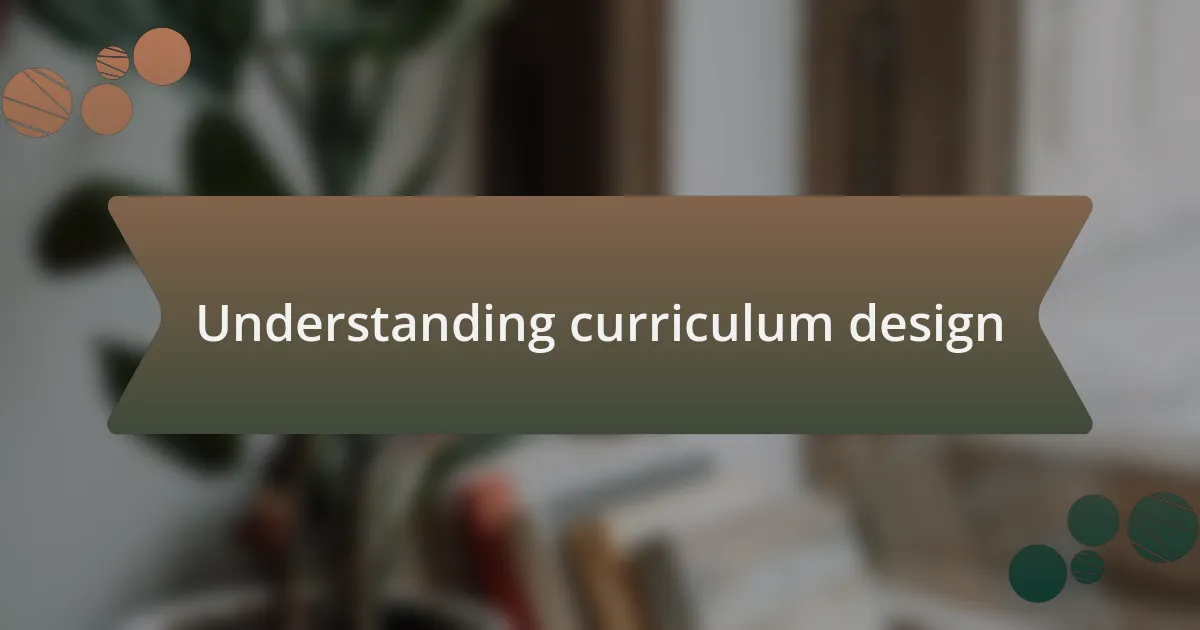
Understanding curriculum design
Curriculum design is a thoughtful process that shapes the educational experiences of learners. Reflecting on my own journey, there was a time when I encountered a curriculum that felt disconnected from student needs. Why is it that some curriculums resonate while others fall flat? The answer often lies in how they’ve been crafted to align learning objectives with real-life applications.
At its core, curriculum design involves creating a roadmap that guides both educators and students toward achieving desired outcomes. When I first designed my own curriculum, I felt the weight of responsibility. I wanted it to inspire curiosity and foster critical thinking, not merely serve as a checklist of topics. Every decision, from content selection to assessment methods, mattered profoundly, and I often found myself asking questions like, “What knowledge and skills do my students need to succeed?”
Understanding curriculum design means appreciating the balance between structure and flexibility. A well-constructed curriculum should accommodate diverse learning styles, which I learned firsthand while observing various classes. Some students thrive on hands-on activities, while others excel in traditional lectures. How can we create a curriculum that respects these differences? This idea constantly shapes my approach, reminding me that effective curriculum design is ultimately about nurturing diverse minds.
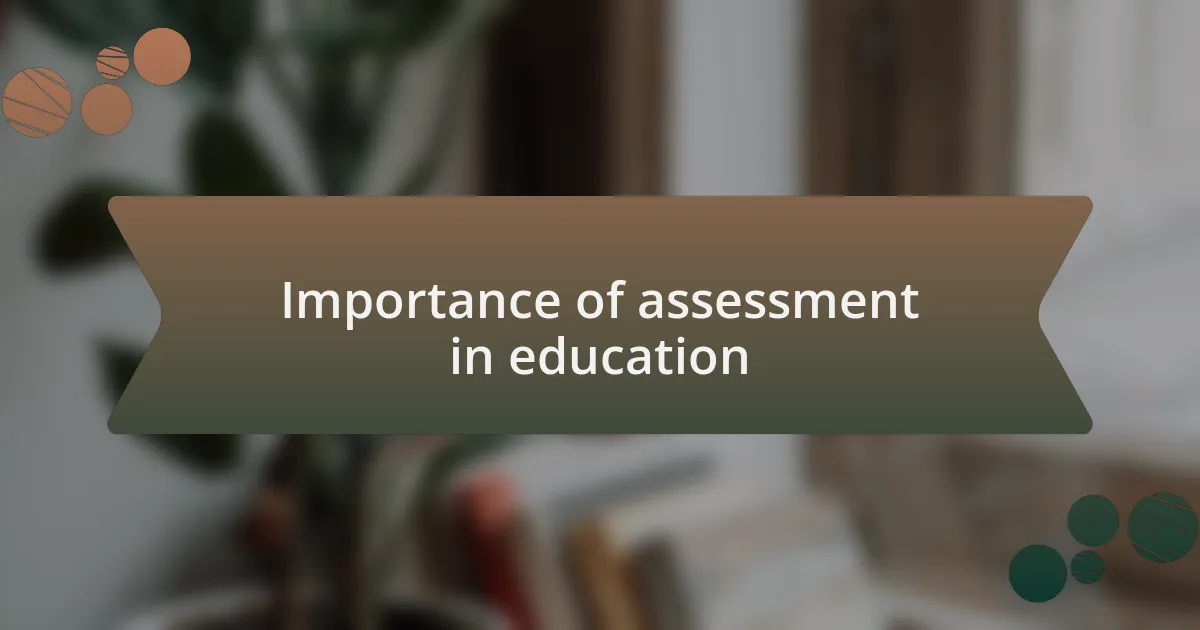
Importance of assessment in education
Assessment in education serves as a crucial feedback mechanism, illuminating the effectiveness of both teaching methods and curriculum. I’ve seen firsthand how insightful assessments can reveal gaps in understanding, prompting necessary adjustments. This reflection process often makes me wonder: What if we could view assessments not merely as grading tools but as powerful opportunities for growth?
When I implemented formative assessments in my classroom, I witnessed a noticeable shift in student engagement. Students who previously hesitated to participate began to flourish, embracing the chance to demonstrate their understanding in diverse ways. It’s fascinating to see how a supportive assessment environment can encourage risk-taking, transforming apprehension into enthusiasm for learning.
Moreover, assessments provide invaluable data that can influence future curriculum design. Observing trends in student performance helps me adapt content to better meet evolving educational needs. Isn’t it remarkable how assessment feedback doesn’t just inform individual growth, but also shapes the collective educational journey of all learners? This interconnectedness speaks to the heart of effective curriculum development.
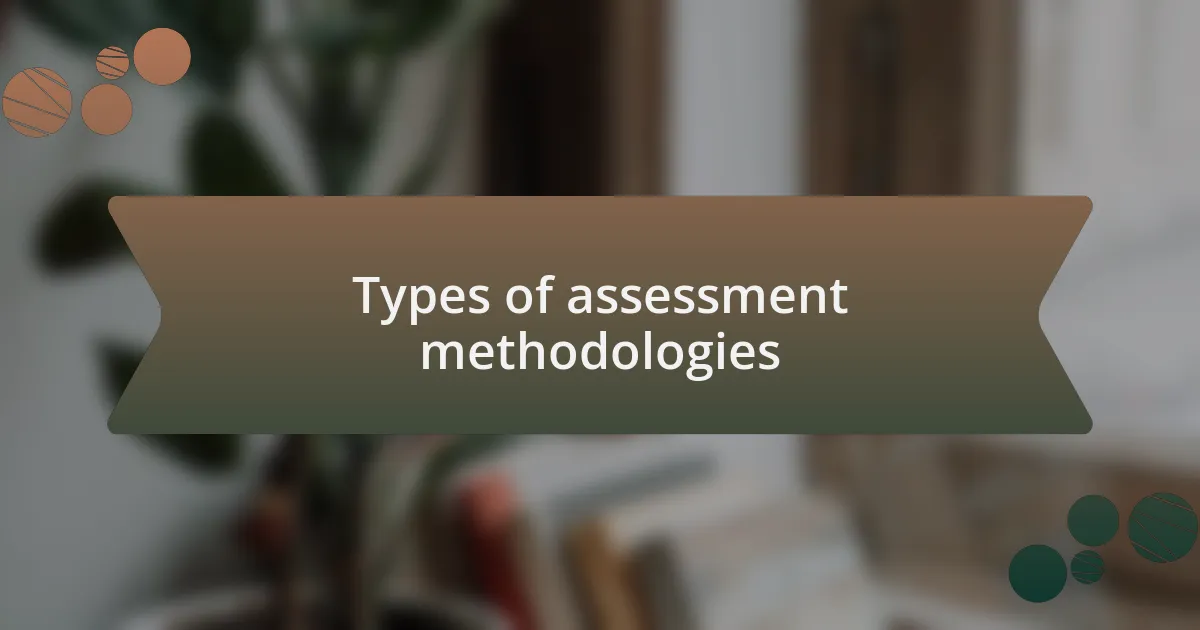
Types of assessment methodologies
There are several assessment methodologies that I’ve explored, each with its unique strengths. Formative assessments, for example, are designed to monitor student learning in real-time. I remember one project where quick quizzes and informal feedback made a world of difference, sparking rich discussions in the classroom. They allow both me and my students to pinpoint misconceptions immediately, turning potential stumbling blocks into stepping stones.
On the other hand, summative assessments provide a broader view of student knowledge at the end of an instructional period. I recall feeling the weight of these assessments, especially during exam weeks. The pressure can be intense, but they certainly play a critical role in evaluating cumulative learning. It sparks the thought: Are we putting enough emphasis on the learning journey rather than just the end results?
Finally, diagnostic assessments are like a compass, guiding the teaching approach based on students’ prior knowledge and skills. I once implemented a diagnostic test at the beginning of a semester and was pleasantly surprised by how it tailored my instruction to meet diverse student needs. It’s a reminder that understanding where students start can lead to a more focused and effective educational pathway. Don’t you think that recognizing individual starting points could transform our approach to teaching?
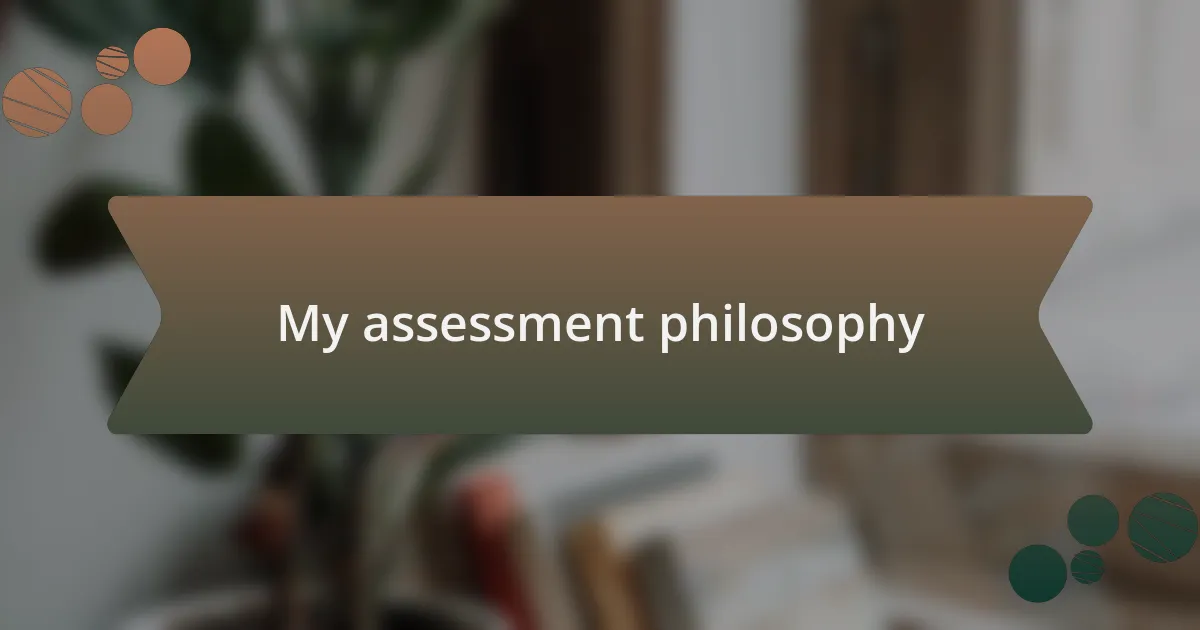
My assessment philosophy
My assessment philosophy centers on the belief that assessment should be an integral part of the learning process rather than a mere endpoint. I vividly recall a project where I integrated self-assessment, encouraging students to reflect on their own learning journeys. This approach not only empowered them but also deepened their understanding of their strengths and areas for growth. Doesn’t that make you wonder how much more engaged students might be if they took ownership of their learning?
I also firmly believe in creating a safe environment for assessment. During one particular year, I noticed that a few students became anxious when faced with traditional tests. So, I introduced more creative assessment methods, like presentations and group projects, allowing them to express their understanding in ways that suited their individual styles. It was a revelation to see how much their confidence grew—couldn’t we all benefit from assessments that feel less daunting?
Finally, my philosophy emphasizes the importance of feedback as a two-way street. There was a time when I provided only scores and grades, but I quickly learned that students craved meaningful, constructive feedback to guide their improvement. By prioritizing dialogue and ongoing feedback, I witnessed remarkable transformations in student engagement and performance. Ultimately, isn’t the goal of assessment to foster growth and inspire lifelong learning?
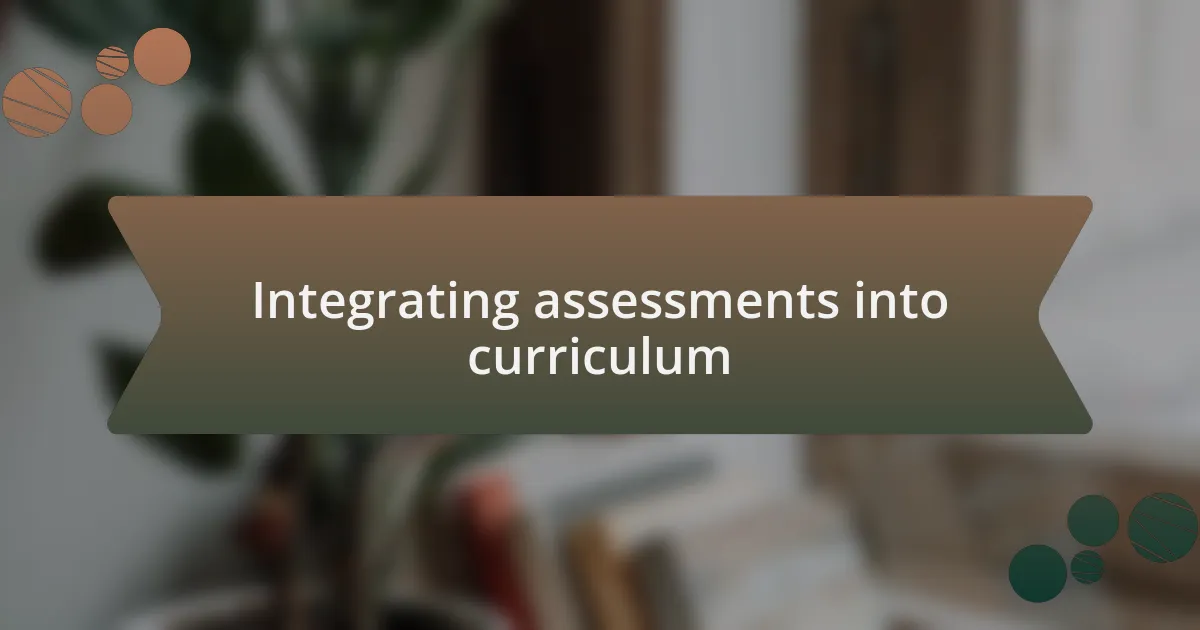
Integrating assessments into curriculum
Integrating assessments into the curriculum requires a thoughtful approach that aligns with the overall learning objectives. I once redesigned a unit by weaving in formative assessments alongside core lessons, allowing students to demonstrate their understanding in real-time. It was fascinating to see how these ongoing check-ins not only informed my teaching but also helped students recognize where they needed to focus their efforts.
In my experience, assessments often reveal more than just knowledge retention; they highlight the learning process itself. During a science project, I allowed students to create a digital portfolio that documented their experiments and reflections. This method not only showcased their understanding but also built a sense of ownership over their learning—don’t you think that connection can make all the difference in motivation?
Additionally, integrating assessments allows for continuous adjustment of teaching methods. I’ll never forget a moment when I discovered that my students struggled with a key concept through a quick informal assessment. Rather than pushing ahead, I adapted my lessons to address their needs. This pivot not only improved their grasp of the material but reinforced the idea that assessments aren’t just evaluative tools—they’re vital indicators that can guide our instructional path. How often do we overlook the power of assessment in shaping the learning experience?
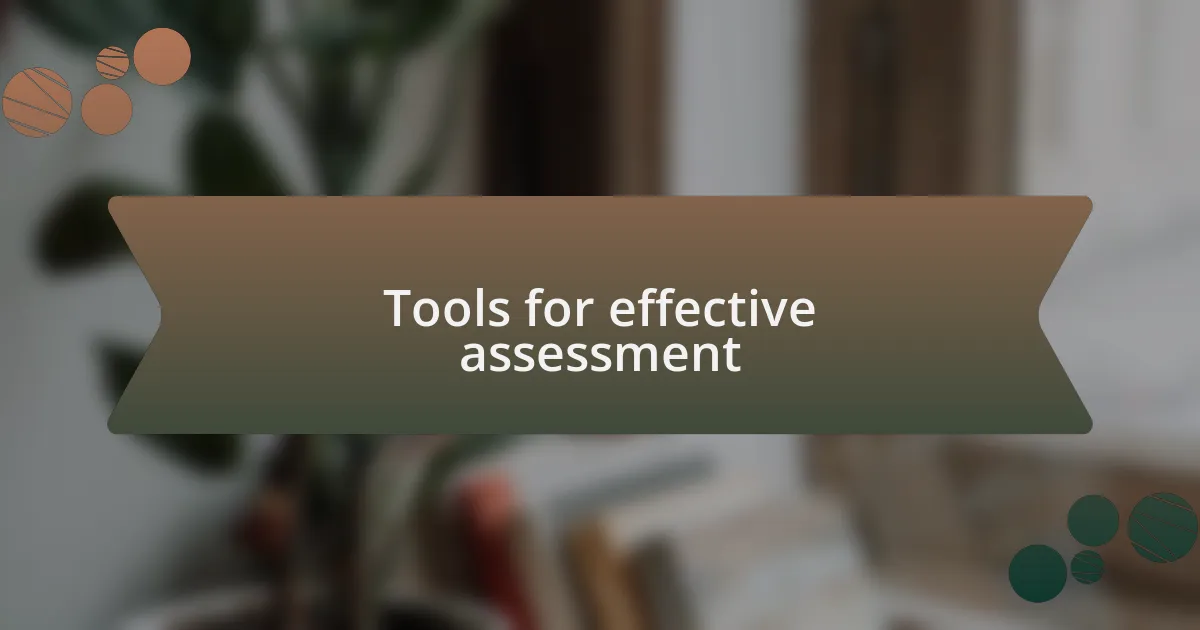
Tools for effective assessment
When it comes to effective assessment, I have found that technology can be a game-changer. For instance, I started using online quizzes which provided instant feedback to both my students and myself. Being able to see their results in real-time allowed me to identify knowledge gaps immediately. Have you ever experienced that “aha” moment when technology reveals insights you might have missed otherwise?
Rubrics are another invaluable tool I’ve utilized. I remember crafting a detailed rubric for a writing assignment, which included clear criteria and levels of performance. This not only helped students understand expectations but also reduced anxiety around assessments. Isn’t it amazing how clarity can lift burdens, transforming assessments from dreaded tests to opportunities for growth?
Observations and peer assessments also play a significant role in my approach. I try to incorporate regular peer review sessions where students provide constructive feedback to one another. I can recall a time when a student’s thoughtful critique sparked an incredible discussion that enhanced everyone’s learning. Don’t you think that learning from peers offers unique perspectives that enrich the educational experience?
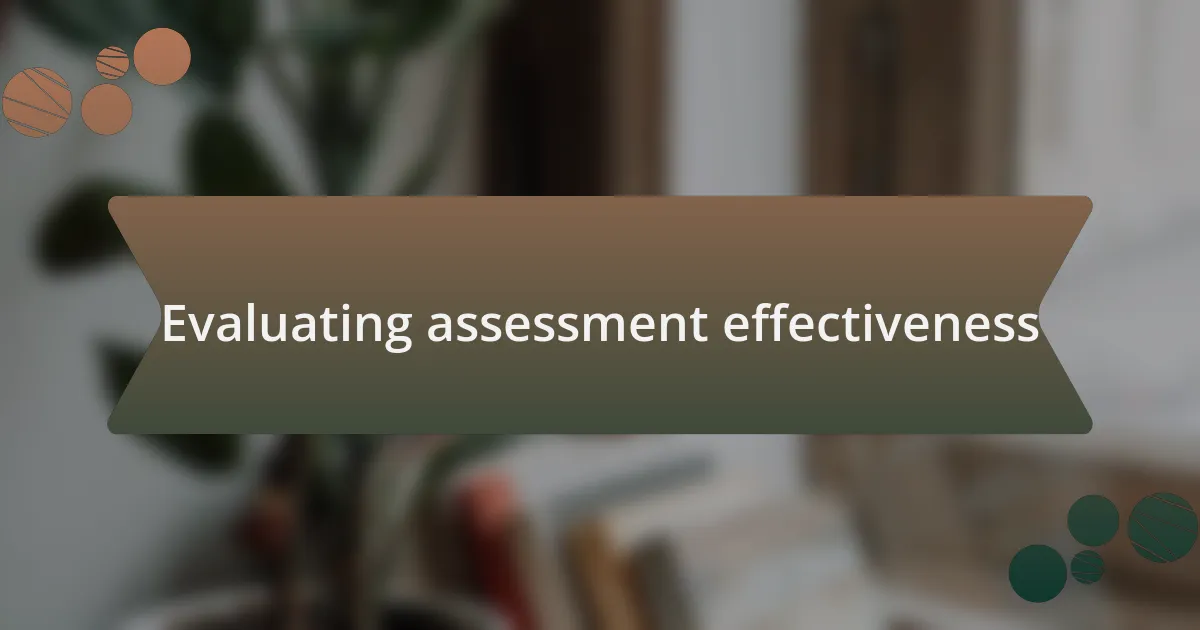
Evaluating assessment effectiveness
Evaluating the effectiveness of assessments goes beyond simply checking grades; it requires examining how well assessments serve learning goals. I have often found myself reflecting on the moments when a student has an epiphany during a test, realizing they know more than they thought. Isn’t it rewarding to witness that transformation?
One strategy I employ is analyzing assessment data to identify patterns in student performance. For example, after an exam, I meticulously compare the average scores across different topics. I remember feeling a mix of surprise and concern when I discovered a consistent struggle with a particular subject area; it prompted me to rethink my teaching approach. Have you ever had a revelation about your teaching methods simply through student results?
Feedback from students is equally crucial for evaluating assessment effectiveness. I regularly ask for their thoughts on tests and projects, often leading to insightful discussions. I was truly moved when a student shared how a specific project deepened their understanding of the subject matter, which reaffirmed my belief that assessments should not just evaluate but also enhance learning. How often do we overlook the valuable perspectives of our students in shaping our assessment strategies?